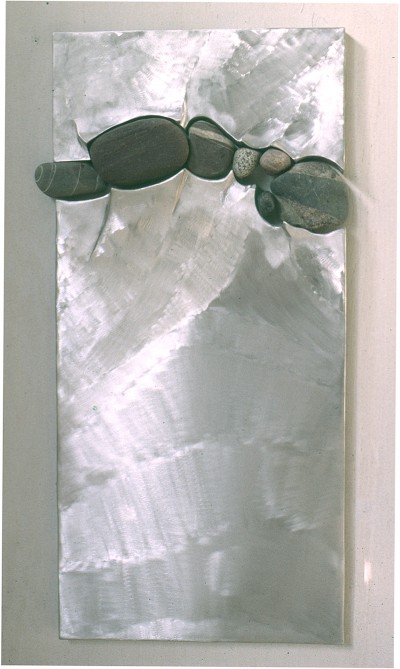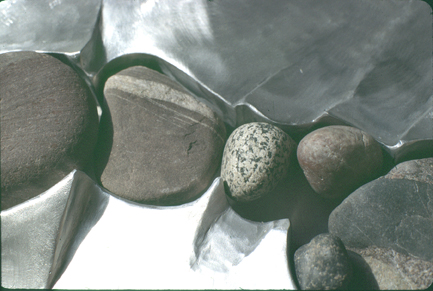Euneclasteia 1
These pieces all share the characteristic of including one or more bits of the earthʼs crust that I have picked up, selected, and incorporated into my usual metalwork.
More InformationThis name is a compound word, composed like many of my titles, from Ancient Greek. The key component is the central syllable: clast. This derives from the greek word for destroying or breaking, but it is also a term in geology indicating ʻa fragment of broken-down rock, varying in size from silt-sized grains to boulders, invariably the products of erosion followed by deposition in a new settingʼ (from ʻThe Concise Oxford Dictionary of Earth Sciencesʼ, Allaby and Allaby).
ʻEuneʼ is Greek for bed. In geology, ʻbedʼ and ʻbeddingʼ are common terms, especially in sedimentology, to wit bedding plane, topset and foreset beds, etc. Sediment deposition, like that of snow turning to ice, is generally a very slow process; a thoughtful examination of any deep formation includes not only the weight of material, but the vast weight of time as well. In a more common, domestic context, other implications arise, such as those inherent in ʻmarriage bedʼ, ʻdeathbedʼ, and others.
The suffix ʻ-eiaʼ denotes action, or process.
In concert, the reference to sediments encapsulated in an ice formation is overt, even obvious. It is hoped that the perceived implications do not stop there, but continue on to other dislocations, natural and human. An example regarding the latter is that we live in what has been called ʻthe age of refugeesʼ, with utterly unprecedented proportions of populations undergoing forced displacement. In this context, even beauty itself can be a metaphorical contributor to meaning.

